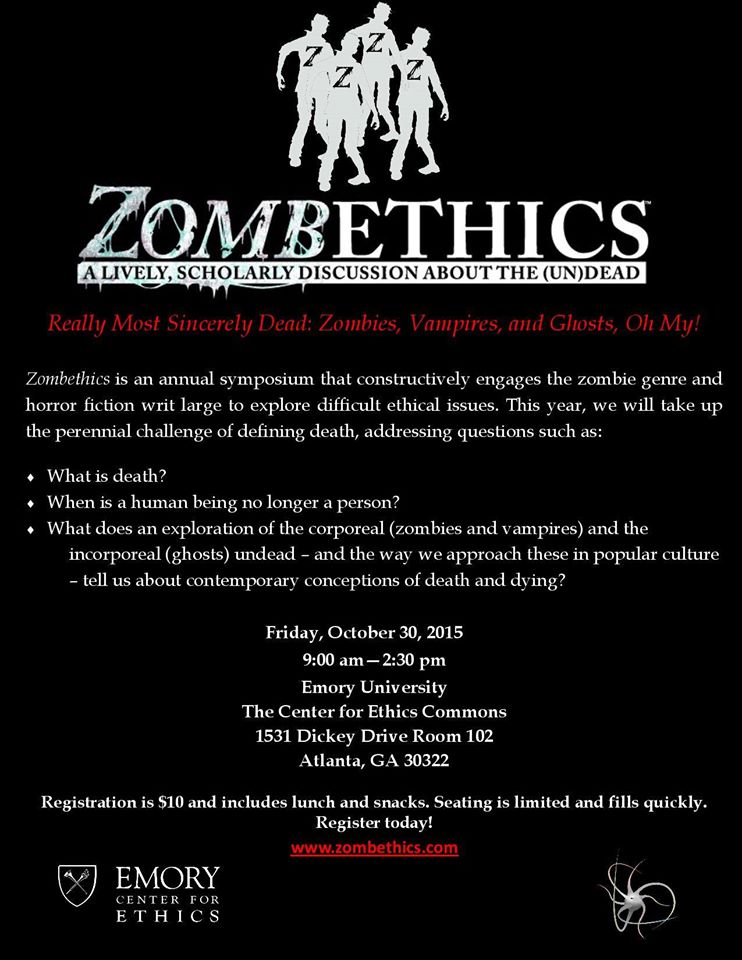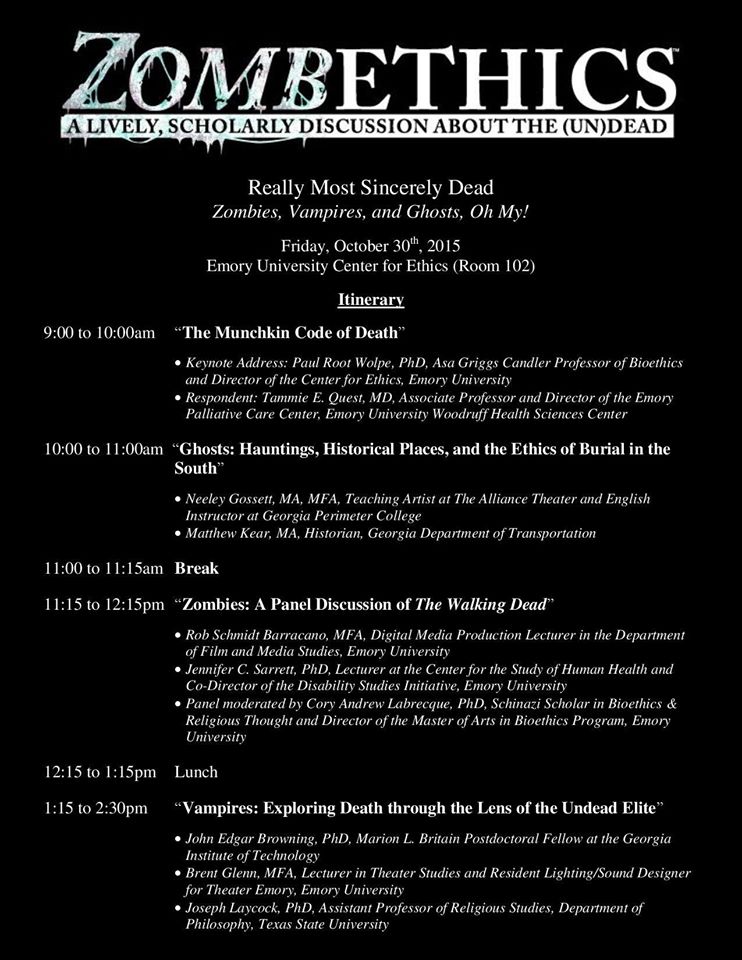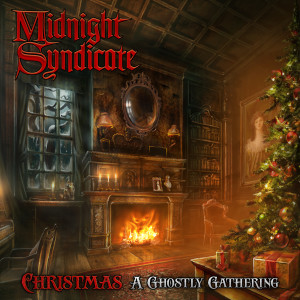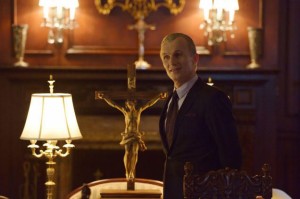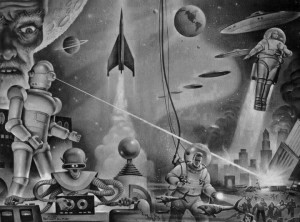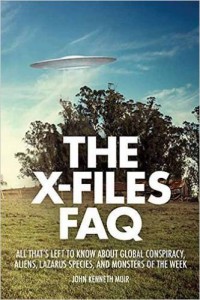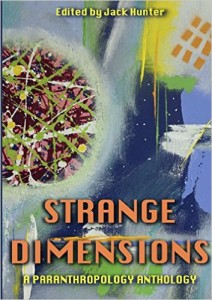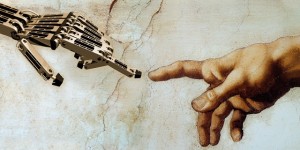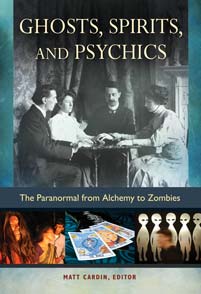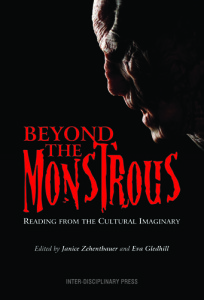It is from the paranormal’s multifaceted nature that the title of this book takes its meaning. Throughout its pages we encounter, time and again, talk of a wide variety of dimensions, levels and layers, from social, cultural, psychological and physiological dimensions, to spiritual, mythic, narrative, symbolic and experiential dimensions, and onwards to other worlds, planes of existence and realms of consciousness. The paranormal is, by its very nature, multidimensional.
“Once again, Jack Hunter takes us down the proverbial rabbit hole, here with the grace, nuance and sheer intelligence of a gifted team of essayists, each working in her or his own way toward new theories of history, consciousness, spirit, the imagination, the parapsychological, and the psychedelic. Another clear sign that there is high hope in high strangeness, and that we are entering a new era of thinking about religion, about mind, about us.”
— Jeffrey J. Kripal, author of Authors of the Impossible: The Paranormal and the Sacred
Table of Contents
Editor’s Introduction: Many Strange Dimensions – Jack Hunter
Foreword: Playing with the Impossible – Joseph P. Laycock
Part 1: Ethnographies of the Anomalous
1. Profane Illuminations: Machines, Indian Ghosts, and Boundless Flights Through Nature at Contemporary Paranormal Gatherings in America – Darryl V. Caterine
2. Hearing the Voice of God – Tanya M. Luhrmannn
3. Life is Not About Chasing the Wind: Investigating the Connection Between Bodily Experience, Beliefs and Transcendence Amongst Christian Surfers – Emma Ford
4. Communication Across the Chasm: Experiences With the Deceased – John A. Napora
5. The Paranormal Body: Reflections on Indian Perspectives Towards the Paranormal – Loriliai Biernacki
Part 2: Making Sense of Spiritual Experience
6. From Sleep Paralysis to Spiritual Experience: An Interview With David Hufford – John W. Morehead
7. A Matter of Spirit: An Imaginal Perspective on the Paranormal – Angela Voss
8. The Spectrum of Specters: Making Sense of Ghostly Encounters – Michael Hirsch, Jammie Price, Meghan McDonald & Mahogany Berry-Artis
9. “Spirits are the Problem”: Anthropology and Conceptualising Spiritual Beings – Jack Hunter
10. The Brain and Spiritual Experience: Towards a Neuroscientific Hermeneutic – Andrew B. Newberg
Part 3: High Strangeness
11. Playback Hex: William Burroughs and the Magical Objectivity of the Tape Recorder – James Riley
12. Crop Circles as Psychoid Manifestation: Borrowing Jung’s Analysis of UFOs to Approach the Phenomenon of the Crop Circle – William Rowlandson
13. The Para-Anthropology of UFO Abductions: The Case for the Ultraterrestrial Hypothesis – Steven Mizrach
Part 4: Consciousness, Psychedelics and Psi
14. Navigating to the Inside: First Person Science Perspectives on Consciousness and Psi – Rafael G. Locke
15. Connecting, Diverging and Reconnecting: Putting the Psi Back in Psychedelic Research – David Luke
16. A Paradigm-Breaking Hypothesis for Solving the Mind-Body Problem – Bernardo Kastrup
 I first heard the story of the mysterious crystal skulls when I was a kid in the 1970s through the television program In Search Of… Joseph Laycock has written an essay on them for Material Religion: The Journal of Objects, Art and Belief, Volume 11, Issue 2 (2015) titled “The controversial history of the crystal skulls: a case study in interpretive drift”. The abstract:
I first heard the story of the mysterious crystal skulls when I was a kid in the 1970s through the television program In Search Of… Joseph Laycock has written an essay on them for Material Religion: The Journal of Objects, Art and Belief, Volume 11, Issue 2 (2015) titled “The controversial history of the crystal skulls: a case study in interpretive drift”. The abstract: